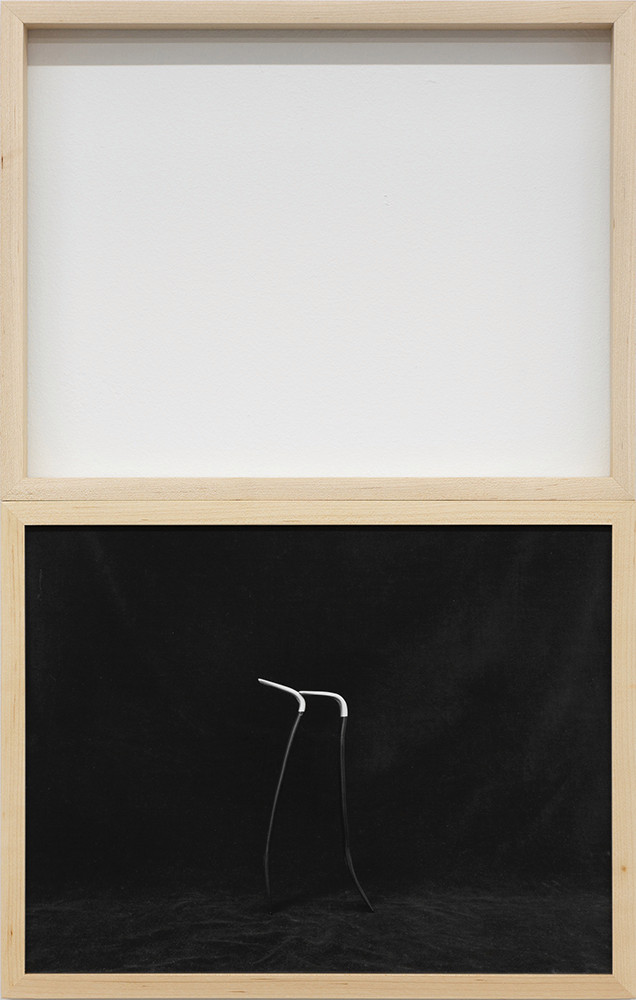[ad_1]
In her photographic work, Katherine Hubbard tends toward inscrutability, decontextualizing objects and rendering familiar landscapes otherworldly. Hubbard, whose practice also includes performance and writing, makes carefully considered references to Minimalism in her photography, with particular attention to Minimalist sculpture’s ambition to reorient the viewer’s relationship to the works’ physical settings. Her exhibition at Company, “Avoid glancing blows” (all works 2019), featured small-scale gelatin silver prints—most of them hanging on the wall in blond wood frames, and four placed in hinged frames on the floor.
Smithson Adjacent “XO”—comprising two aerial photographs of rock arrangements near Robert Smithson’s earthwork Spiral Jetty in Utah, one crisscrossed and the other circular—was the show’s most direct reference to the legacy of Minimalism, but a group of high-contrast photographs depicting a raw, wood-beamed underground space carved from bedrock most effectively demonstrated Hubbard’s destabilization of setting. Blue stone bed rock and rubblization were tightly framed, fragmented views of the starkly lit site, while untitled (tread) and untitled (claw) offered crepuscular glimpses of the heavy-duty machinery presumably used to create it. Hubbard offers only partial views of the environment, from multiple vantages, denying viewers any sense of a singular or fixed setting and instead inducing a heightened awareness of the contingency of their own perspectives.
Hubbard’s interest in displacing viewers’ perspectives was similarly evident in a trio of photographs showing two crowbars arranged in different configurations in her studio: lying one atop the other in still life spoon; balanced back-to-back in still life lean; and standing one before the other in still life shoulder. The photographs’ dark backgrounds and the decisive, balletic positioning of the objects bring these “still lifes” closer to portraiture, the anthropomorphic quality echoed in the titles’ references to body parts and gestures.
Depicting pale, nude legs treading water, the photographs set in hinged frames on the floor were likewise studies of position. The images are ethereal and flecked with light, sensuous but desexualized, their subjects unknown and their settings nebulous. The anonymity, however, helped viewers to see the images’ formal relationship to Xingu River ray, a wall-bound photograph of a stingray underwater at the Pittsburgh Zoo. Throughout the show, Hubbard leveled distinctions between different types of subjects, conflating human and animal, living and inert, availing herself of photography’s capacity to make the commonplace strange.
This article appears under the title “Katherine Hubbard” in the April 2020 issue, pp. 79–80.
[ad_2]
Source link


